Mochi is one of my most favorite treats to eat… I LOVE mochi! It’s so hard to come by though… Where we live, the nearest Japanese market is (at least) a 30 minute drive, and we don’t go down that way very often. Also, I’ve noticed that Mitsuwa Market has reduced their “fresh food/bakery” section by quite a bit – they used to have all kinds of fresh sweet buns and mochi for sale… but lately, they only sell the processed packaged kind (with chemicals) that can sit on the shelf for months. What happened to the fresh daily mochi???
Surprisingly, mochi is not that hard to make. I was shocked when I discovered how easy it is… I have wonderful memories of family New Year’s celebrations at the New Otani Hotel in downtown Los Angeles as a kid, where each dad would take turns pounding the hot mochi rice (in a wooden bucket) with a huge wooden mallet. I also remember my friend’s mom had a special high tech “mochi machine” from Japan – it would cook the rice and eventually hot mochi would come out a tube. But really, to make mochi, all you need is a microwave and a microwaveable bowl – no high tech devices or giant wooden mallets needed!
Now that I know how to make mochi at home, I don’t need to drive down to Mitsuwa anymore (and then become disappointed when they don’t have any fresh mochi)! All you need to buy is Mochiko sweet rice flour – and this I can find in the Asian aisle at the regular supermarket. (Make sure you buy mochiko, the Koda Farms brand, with the blue star on the box. Do not try this recipe with regular “rice flour” from the health food store – it must be mochiko!) You can use either potato starch or cornstarch for dusting. Whenever we go to 99 Ranch market (the Chinese market), I stock up on cans of sweet red bean paste (I’ll buy 5-10 cans at a time). You can make the red bean paste from scratch, but the one in the can is actually pretty good – so I just make it a little bit easier on myself and use the canned sweet red bean paste.
*If you are looking for other types of mochi, try my Apple Pie Mochi, Pumpkin Pie Mochi, Yomogi Daifuku, or Kusa Mochi recipes.
- 1 1/2 c. Mochiko Rice Flour
- 1 c. sugar
- 1 1/2 c. water
- 1/4 tsp. salt
- 2 drops rice vinegar
- 2 drops red food coloring
- 1/2 can sweet red bean paste
Mochi Coating:
- 4 T. potato starch (katakuriko) or cornstarch
- 2 T. sugar
1. Combine the mochiko, sugar, salt, water, and rice vinegar in a microwavable bowl. Mix thoroughly with a whisk.
2. Add the food coloring (optional) and whisk until your mochi batter turns completely pink.
3. Cover the bowl loosely with plastic wrap, and microwave for about 9 minutes on high. Taste a small piece of mochi and make sure the grainy texture has cooked out. If still grainy, microwave for 1 more minute.
4. Meanwhile, portion the sweet red bean paste into 12 smooth balls. (I use a cookie scoop to do this.)
5. Mix the mochi coating ingredients together, and sprinkle half of it onto a large cutting board. Dump the hot mochi onto the cutting board.
6. With the back of a large chef knife, push the mochi into an even rectangle shape.
7. Cut the rectangle into 12 even pieces.
8. While the mochi is still hot, take one piece and flatten it with your hands. Put a portion of the sweet red bean paste on top.
9. Carefully fold the rectangle corners upward and continue to pinch until the filling is enclosed. Dust the bottom and top with the mochi coating. Repeat this process for the rest of the mochi pieces.
10. The mochi is best eaten the same day, or at the latest the next day. Cover with plastic wrap to store at room temperature.

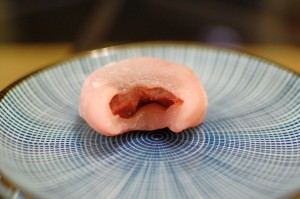
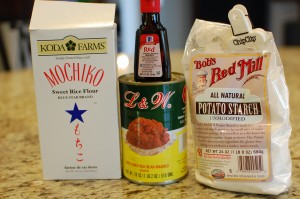
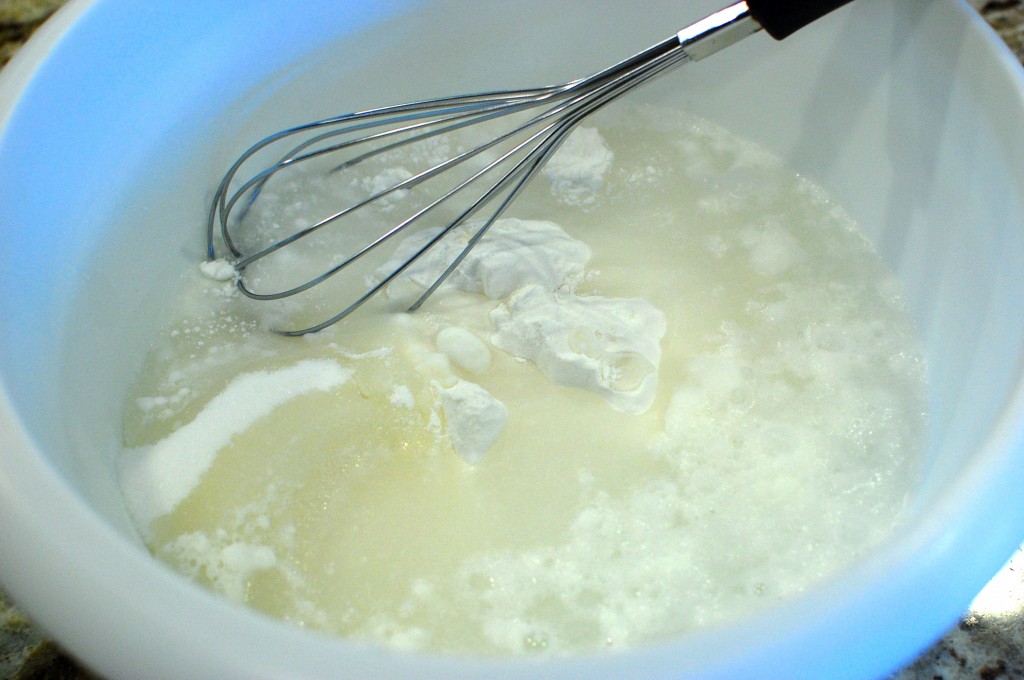
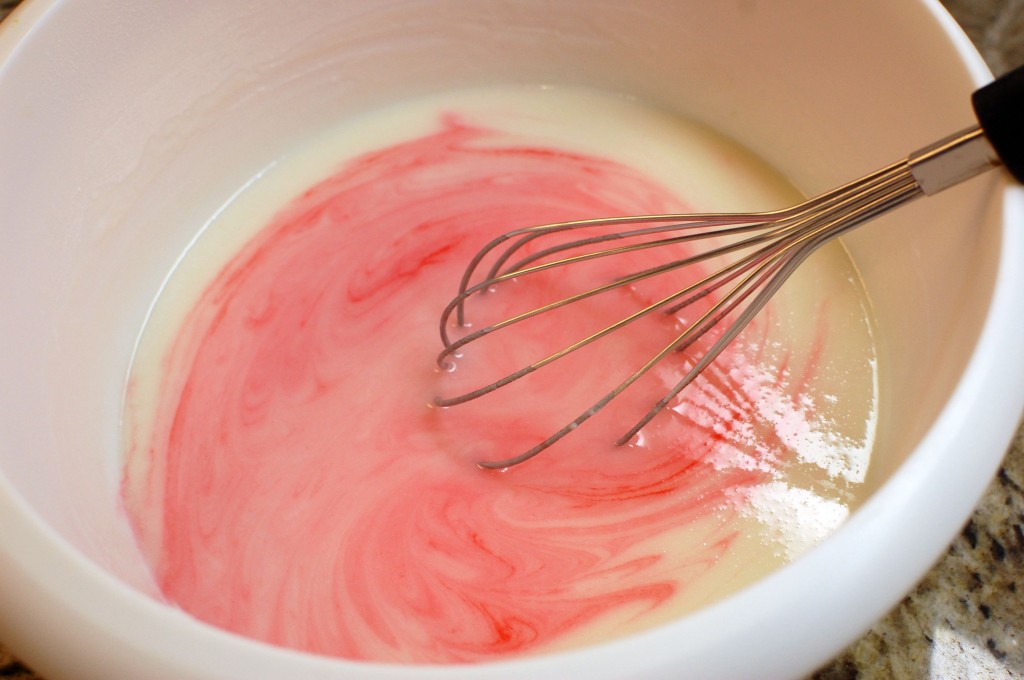
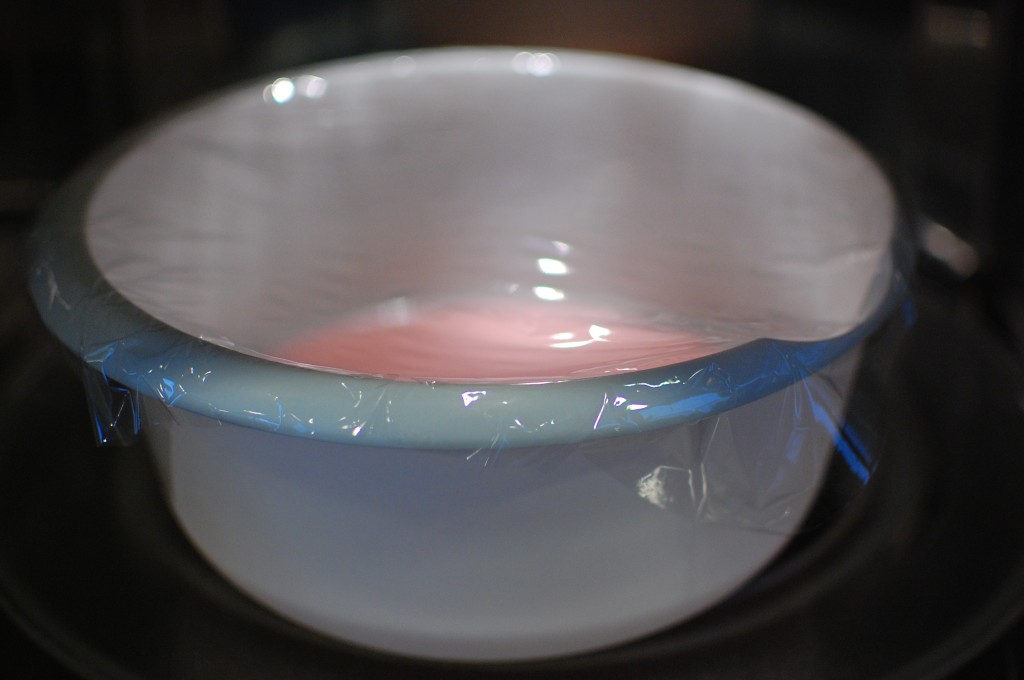
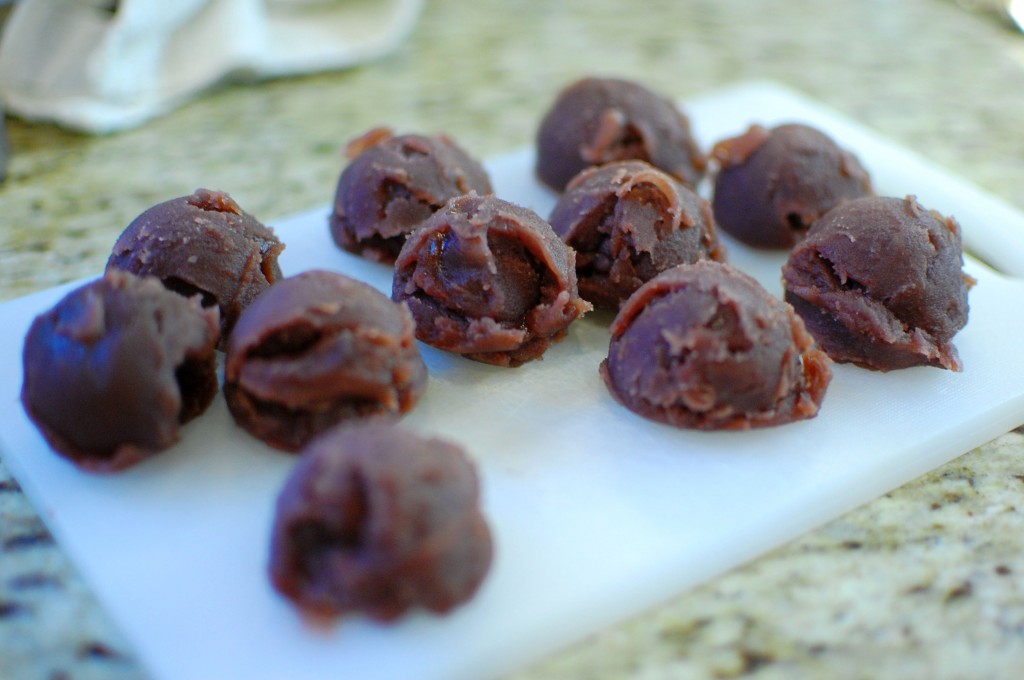
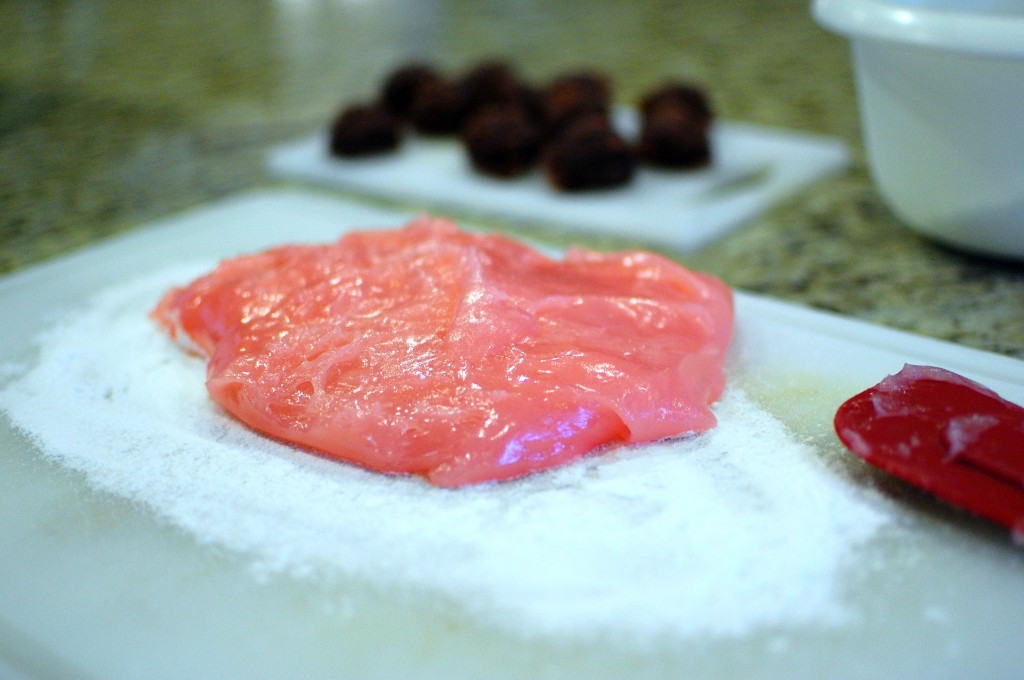
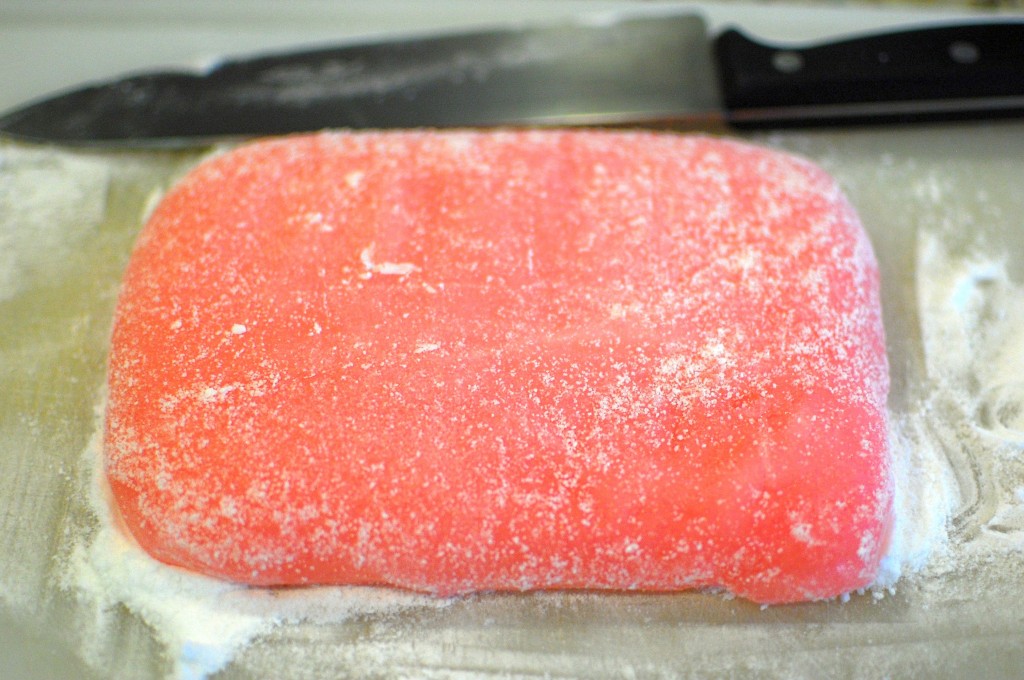
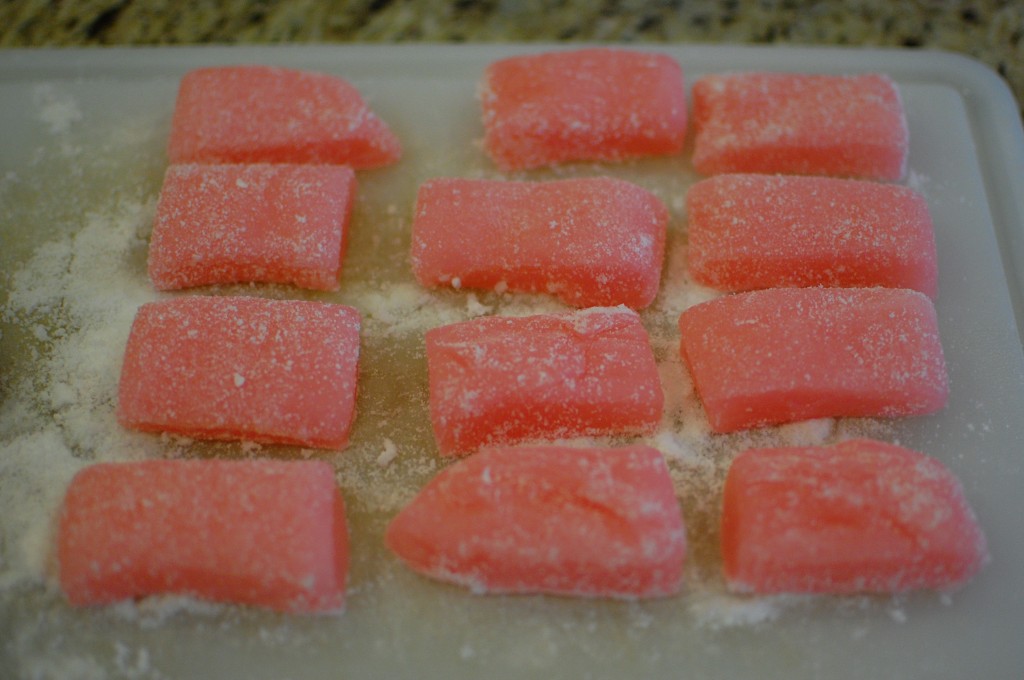
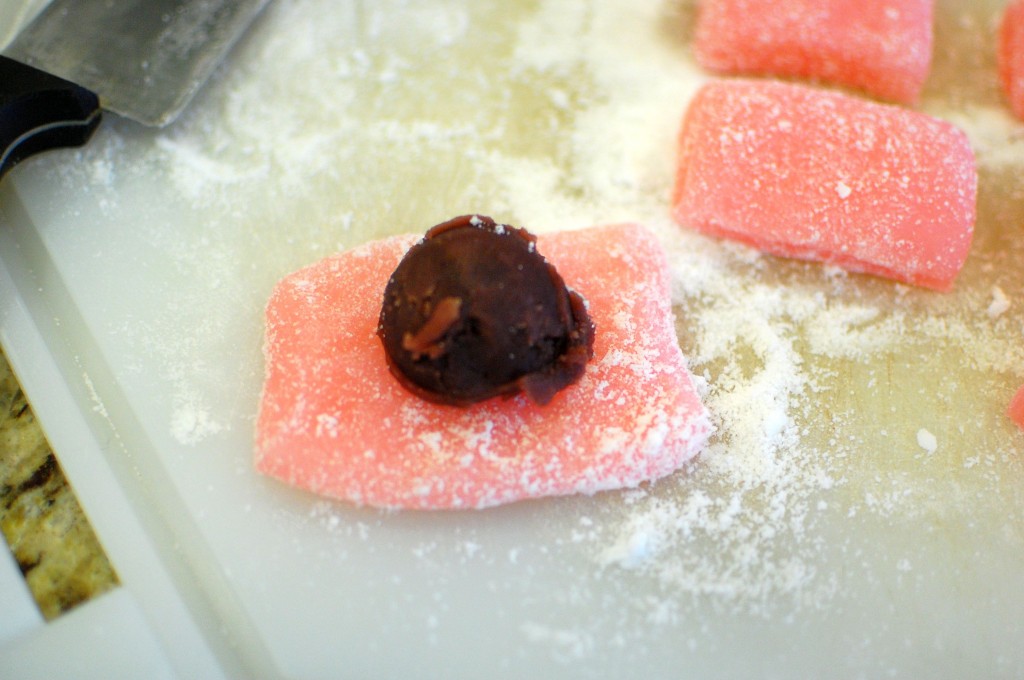
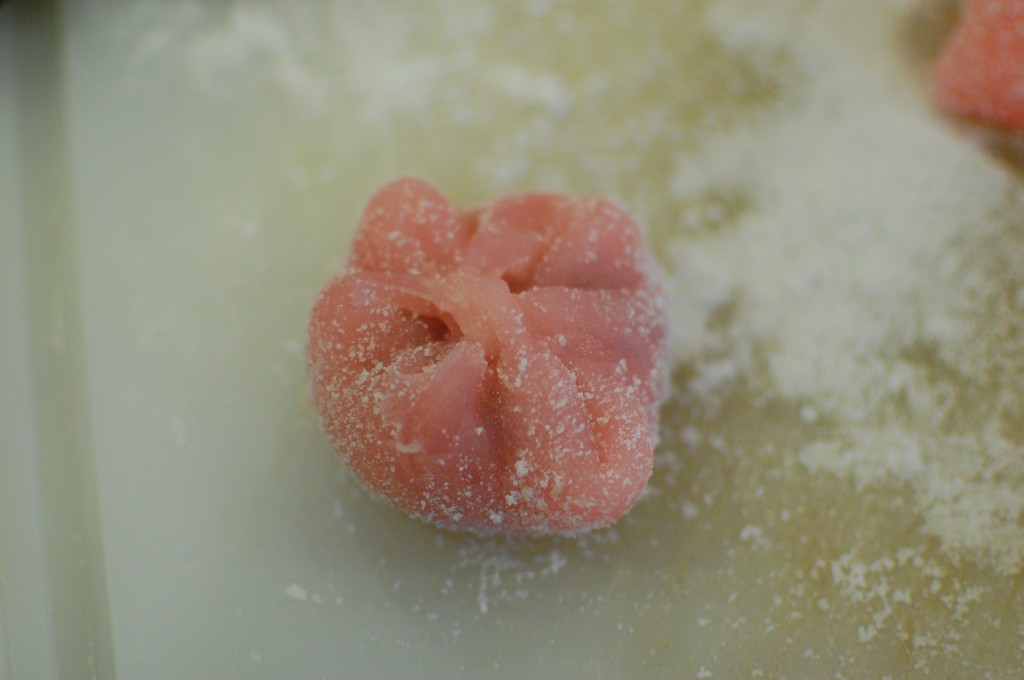
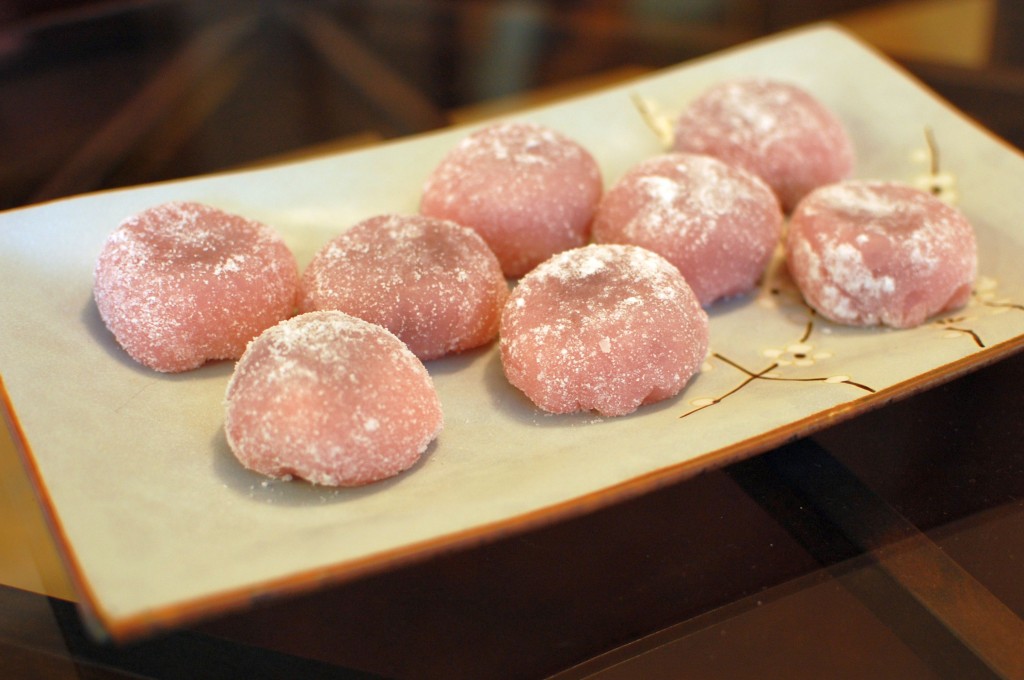


Hello there!! I’ve stumbled in your blog as I was researching for more mochi flavor ideas. I’ve been making mochi, experimenting on different flavor combinations.
Quick question: what’s does the vinegar do? I’ve never done it with vinegar.
Hope to hear back from you. Thanks
Hi Ann,
I’m not 100% sure, but I remember reading somewhere that adding a few drops of vinegar helps to soften the mochi dough.
Thank you…. I thought that’ could be the reason. I’ll try it with 2 drops of rice vinegar. I’ll let you know if it does make a difference. xo
The 2 drops of rice vinegar totally made a difference!! Thank you this is how I’ll make my mochi from now on… I also cut the sugar into half. The sweetness is just perfect.
this is how I’ll make my mochi from now on… I also cut the sugar into half. The sweetness is just perfect.
Hi! My friends and I have been dying for mochi since we visited Japan, so I’ve been hoping to figure out how to get my hands on it for a while. Then your amazing amazing delicious cream pan recipe led me here…
Well, I tried making mochi for the first time this morning. I had VERY low expectations (no offense to your awesome recipes, but I didn’t trust myself to be able to pull this one off). It turned out great! It was also surprisingly easy and fast to make.
I just want to say that I really love your blog! Thank you so much for posting these recipes. You’ve demystified Asian foods for me with the step-by-step pictures and simple instructions. I look forward to trying more recipes!
You’ve demystified Asian foods for me with the step-by-step pictures and simple instructions. I look forward to trying more recipes!
Hi Lauren! So glad I could help! That was one of my problems too… eating wonderful food and not being able to get it at home. THEN trying to figure out how to make it… but not being able to find any recipes or instructions.
I’m so glad the mochi turned out for you – it really is easy if you use the microwave. I think the hardest part is cleaning the goo off the bowl when you are done!
Hi, I just happened to stumbled in your blog while searching for gluten free bread recipe! The person put a link to your blog and I was so surprised to be able to find so many great Asian recipes in English!! I am Chinese, and many times it’s hard for me to translate Chinese recipes to English when trying to find the ingredients! I LOVE mochi! And, I was so happy when I first found out that sticky rice flour is not gluten! Woohoo!!
Quick question, what should I do if I don’t use microwave? What is your suggestion?
Thank you so much for such a great blog!
Hi Tina! Thanks for your comments. If you don’t have a microwave, you could probably steam the mochi dough in a cake pan. I’ve never tried it to make it without the microwave – so you may need to experiment a bit – but I would probably try steaming for 30 minutes and test to see how the texture is, and just go from there.
Thank you! I do have microwave, just not a big fan on using it. I will use microwave for the first try, just to see the consistency before going for steam.
I will use microwave for the first try, just to see the consistency before going for steam.
You mentioned 2 drops of vinegar. I have the big bottle, so it actually pours out. How much is that 2 drops? Same as the food coloring?
If you have a microwave, then I would just use it – you’ll get the best texture that way, and your mochi will be drier. With steaming, you might end up with a gooier mochi – which might be harder to work with. It is perfectly safe to use the microwave, as long as you use a microwave safe bowl.
2 drops would be about the same as what you get with food coloring. If you have a teaspoon measure, probably about 1/8 tsp.
Got you! Thank you so much for your quick reply!!
I just saw a video on YouTube that the guy actually did steam it for 30 minutes and you are right, from the video, it was very gooey and hard to work with! I will stick with microwave then. ^_^
There are some recipes where you cook the mocha on the stovetop, like Japanese Cooking 101′s recipe.
Mocha? You mean Mochi, right? Yes, the old way is to steam or cook the mochi mix on the stove… the microwave has given us an additional tool to make mochi.
Wow! This worked! I had my doubts about microwave mochi, but your directions were perfect.
I remember new years at the new otani too!
Akemashite omedeto!
wow, another tremendous instruction from you, with great photos! i am going to make this very soon and i will be adding macha to it; will let you know the quantity and how it worked out. Thx so much again Mika.
You are really something!
Well, this blog inspired me. Thank you. I am all American but have been a Buddhist of a Japanese Buddhist school all of my adult life. Eating mochi is a tradition on New Years Service so I decided to try your recipe. Looked like I could tackle it and convenience store daifuku is just plain junk food. FYI: I’m a well-versed cook (maybe even a chef). Hmmm…my results are fantastic. I made the standard daifuku with anko (red bean paste) and also Ichigo Daifuku (strawberries inside and I coated them with chocolate ganache before the mochi wrap. My temple members are going to be knocked out tomorrow eating them. I will say there are some little tricks that you discover making them (just the right amount of dusting, getting the mochiko goo out of the cooking bowl and cutting the pieces with a starched knife with gentle seperation etc. But if you just work with it once, you work out the kinks. One thing helped me tremendously: I put the anko bean paste (mine was Japanese and quite smooth) into a pastry tube and squeezed it directly on the rounds of mochiko. I think the biggest trick is just keep a light dusting of starch/sugar on all surfaces of the mochiko at all times. Avoid sticking at all costs. Thanks again.
Thanks for your kind words! I’m glad my recipe worked out for you. Best wishes for a Happy New Year!
I’m glad my recipe worked out for you. Best wishes for a Happy New Year!
My son is severely allergic to fish and seafood, if a dish is prepared near where a fish dish is being prepared, it can cause him to go into anaphylactic shock and stop breathing. Unfortunately this also means that I can’t buy from Asian food stores because there’s a lot of seafood elements in Asian dishes, like fish sauce etc, I always have to buy him organic vegan soya sauce and whatnot, out of this very worrisome fear. He loves Thai and Chinese food though so I try to make it for him, but it’s difficult. He remembers having mochi an loving it before his allergy became apparent, though, and I have to use normal rice flour, is there anything I can do to make it act like glutinous rice flour? Or can I grind fat rice into powder and use that? I don’t know if that counts as glutinous rice, though. Please help! I really want to make this for him. <3 so
Hi there Amber! Is there some reason why you can’t buy glutinous rice flour? There isn’t anything added to the rice flour – it’s simply made from a different type of rice than regular rice flour. My favorite brand of glutinous rice flour can usually be found in the “Asian” aisle at the regular (American) supermarket: the Koda Farms brand of “Mochiko” Sweet Rice Flour:
http://www.kodafarms.com/blue-star-mochiko-sweet-rice-flour-serving-suggestions/
According to their website, this particular rice flour is hypoallergenic, grown and processed in California (not overseas). So I don’t think you have anything to worry about any fish or seafood ingredients added in. It’s just pure sweet rice flour. Unfortunately, regular rice flour will NOT work. You need glutinous (sweet) rice flour.
Otherwise, you can try the Bob’s Red Mill brand of sweet (glutinous) rice flour, which can usually be found online or at health food stores like Whole Foods or Sprout’s:
http://www.bobsredmill.com/sweet-white-rice-flour.html
I tried following your recipe bit it went so wrong:( the mochi turned into one giant hard crumbly ball do you know what i did wrong??
do you know what i did wrong??
Did you use enough water? Double check your measurements. The batter should be REALLY THIN and watery before microwaving. Also, if your microwave cooks faster than others, try experimenting with less time in case you overcooked it. I have never had this turn dry and crumbly… I’m not really sure what you did wrong.